I had the opportunity to watch Leonardo and Sam: The Terrible Monster and the Most Scaredy-Cat Kid in the Whole World, Respectively with my daughters (aged 7 and 9). The show is adapted from two Mo Willems books, Leonardo, The Terrible Monster and Sam, The Most Scaredy-Cat Kid in the Whole World. We even saw a few cameos from Willems’s beloved characters Pigeon, Elephant Gerald, and Piggie!
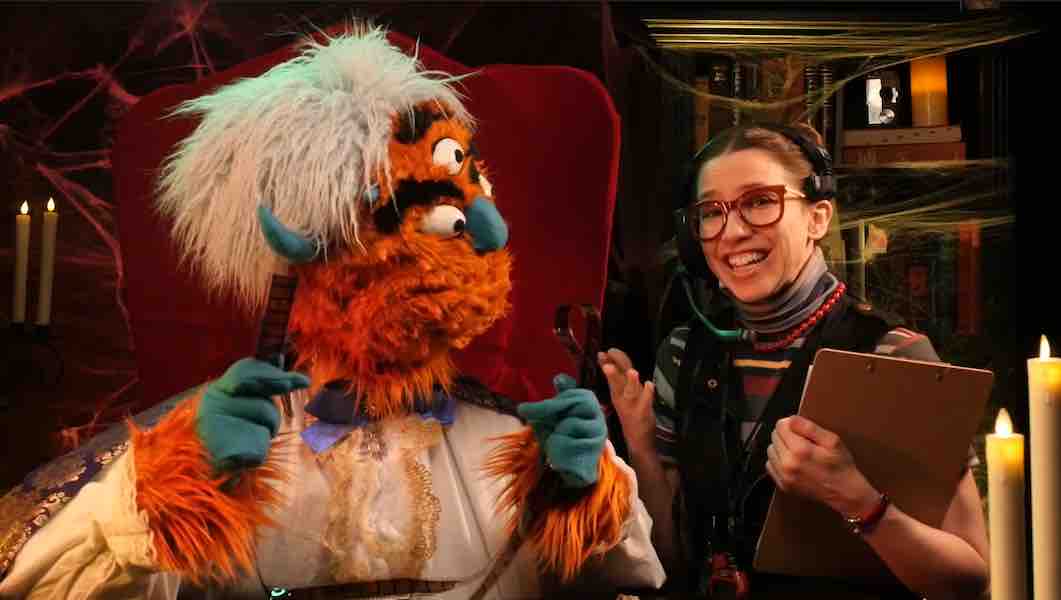
The show begins with a fun and silly framing device of a monster movie night, hosted by a hand puppet named Giacomettie (Lindsey Noel Whiting and Samuel Taylor). The Assistant Producer Emily (Lily Emerson) attempts to fix an issue of broken movies by offering to make her own movie live, using paper puppets. Giacomettie reluctantly agrees and the audience begins to watch the first half of the movie.
We get to meet Leonardo, the not-so-terrifying monster. He is too adorable for his own good as he tries to no avail to scare someone. He then gets the idea to find the most scaredy-cat kid to try and scare — Leonardo! They meet and the results are not ideal at first. But as the two characters get to know each other, they find they have more in common than not.
The second story features another scaredy-cat kid named Kerry and a monster named Frankenthaler. Similar themes of friendship and expressing feelings are explored. Emily eloquently states near the end that “sometimes feelings stack up inside you like building blocks.” Although the film is tailored for a younger audience, the lessons explored are universal and important for any age.
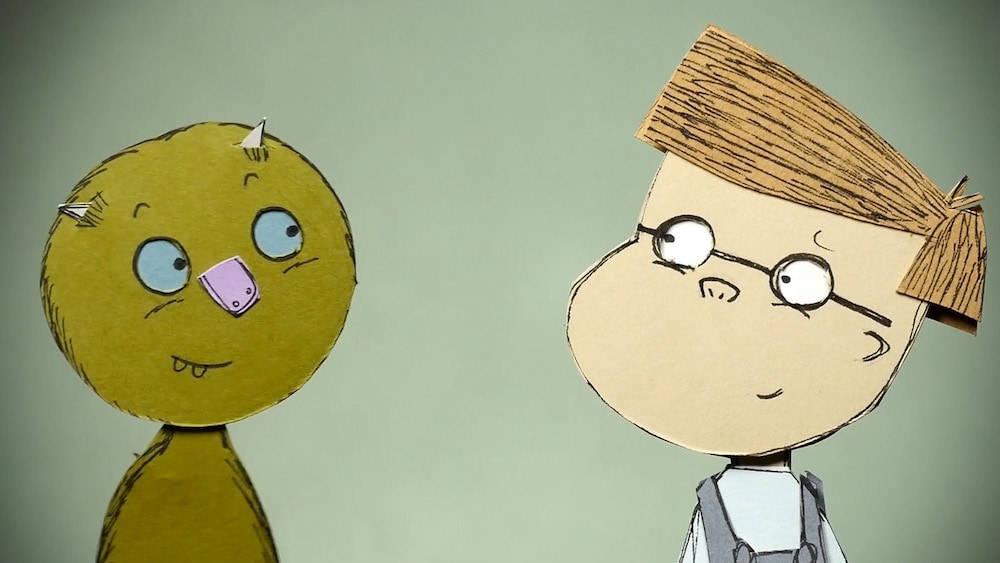
Manual Cinema is an Emmy Award–winning performance collective, design studio, and film/video production company founded in 2010 by Drew Dir, Sarah Fornace, Ben Kauffman, Julia Miller, and Kyle Vegter. They combine innovative puppetry, cinematic techniques, and original sound and music to create immersive stories for stage and screen. This production was filmed for virtual viewing, using the same tools and techniques as their live performances.
Manual Cinema uses the video frame as a theater proscenium, a technique pioneered by Jim Henson during his early commercial and television work. This technique involves keeping the camera stationary and creating movement and depth through the placement of puppets, props, and other effects. I recommend watching the “behind the scenes” portion that follows the performance where they break down each visual element. But be warned — it may cause the viewer to try the same tricks at home using their own lighting, puppets, and camera!
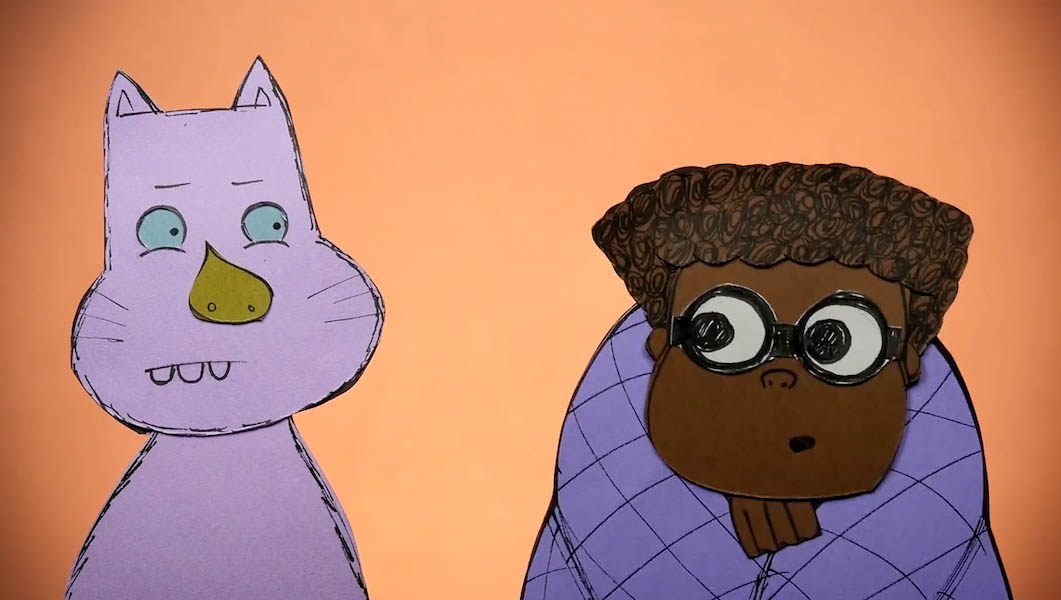
Director Sarah Fornace adapted the stories with Drew Dir and Ben Kauffman. The 2-D puppetry from Lizi Breit, Drew Dir, Sarah Fornace, and Julia Miller is wonderfully effective — it’s easy to forget that these fantastic creations from Drew Dir aren’t moving themselves like an animated movie. The set design from Julia Miller and lighting design from Andrew Morgan work wonderfully with the storytelling. I especially loved how the lights and changing backgrounds are used when Sam and Kerry would scream. The original music from Ben Kauffman and Kyle Vegter engages the viewer and provides deeper emotional connection to the characters. (My daughter was inspired to write her own song for her puppet show after watching this production!)
After watching the feature presentation and behind-the-scenes portion, my children wanted to make their own characters and movie. “You can make something awesome with just household items,” my eldest daughter, Joanna, told me as she searched for supplies. Her sister, Susan, added, “It’s really cool how they made puppets out of paper.” We found ice-pop sticks, colorful paper, and tape to create characters and stories.
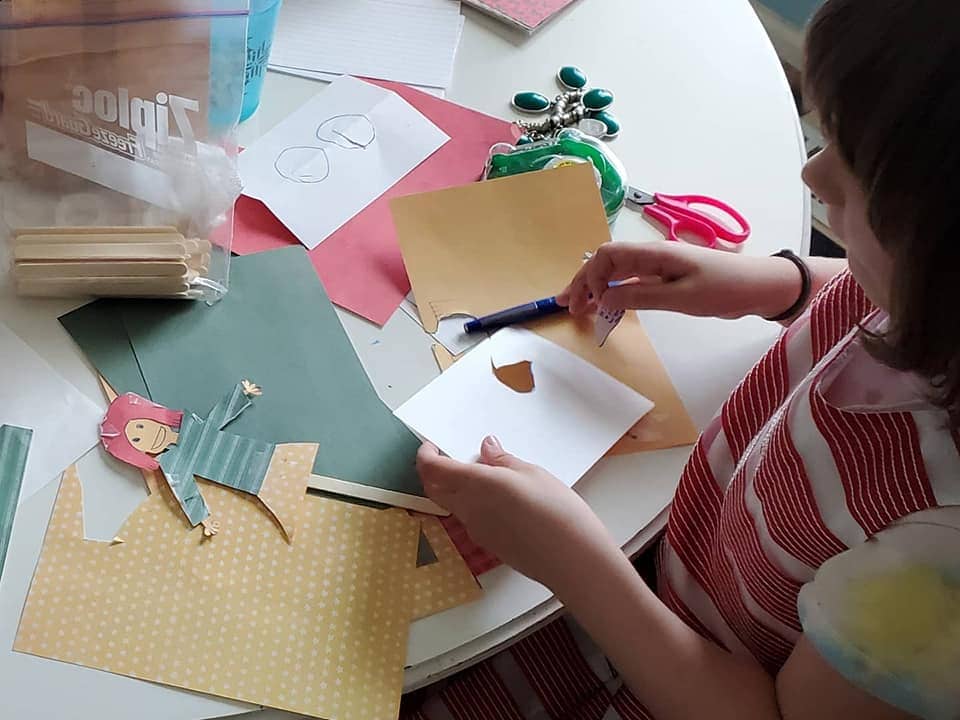
I then hung black poster board on the back of a door as a makeshift background and used my cell phone on selfie mode so they could use it as a monitor. My youngest daughter did a call-and-response style show about a reporter named Rose, a familiar format to what she would watch on PBS Kids. My eldest daughter created a story called “History Hunters” starring a boy named Sam looking for a book at the library, featuring a flipping puppet with dual expressions as well as an up-close moving-eye effect. They even made their own behind-the-scenes segment where they show the audience how everything was made and videoed.
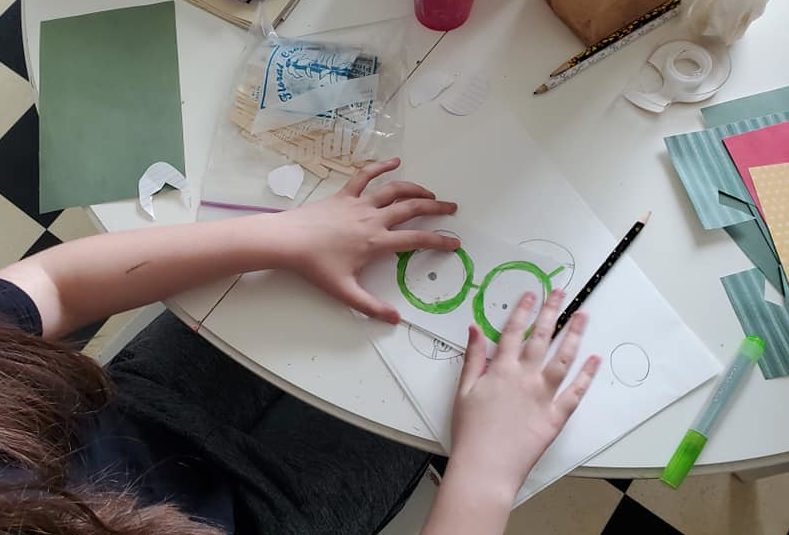
As a parent, it was incredible to see my children learn new skills and apply them in real time. Our 2020–2021 experience of virtual schooling, canceled camps, and online everything has been full of surprises and shifting expectations. I’m thankful that this production has provided another opportunity for my children to explore, learn, and grow in their creativity.
I’m looking forward to seeing more collaborations from The Kennedy Center and Manual Cinema.
Leonardo and Sam: The Terrible Monster and the Most Scaredy-Cat Kid in the Whole World, Respectively is a Kennedy Center World Premiere Commission for Young Audiences from the Emmy Award–winning Chicago-based company, Manual Cinema. The two books it’s based on are by Kennedy Center Education Artist-in-Residence Mo Willems.
A part of the Kennedy Center’s Digital Performances for Young Audiences series of six virtual shows, Leonardo and Sam: The Terrible Monster and the Most Scaredy-Cat Kid in the Whole World is available to the public for streaming through June 27, 2021. The production, along with the other five shows in the series, is being provided free to schools across the country (more than 1,6Su00 schools have signed up for this production), and is available to the public for individual purchase or as a part of the digital Performances for Young Audiences subscription.




